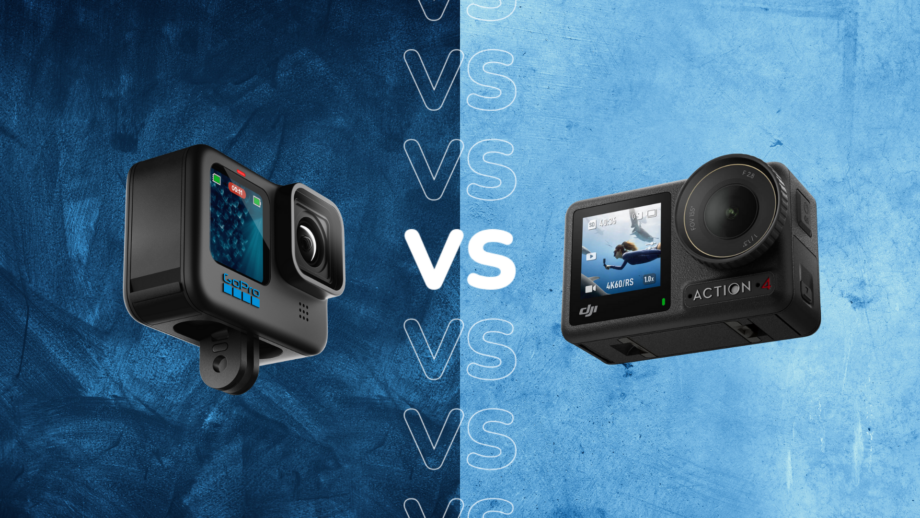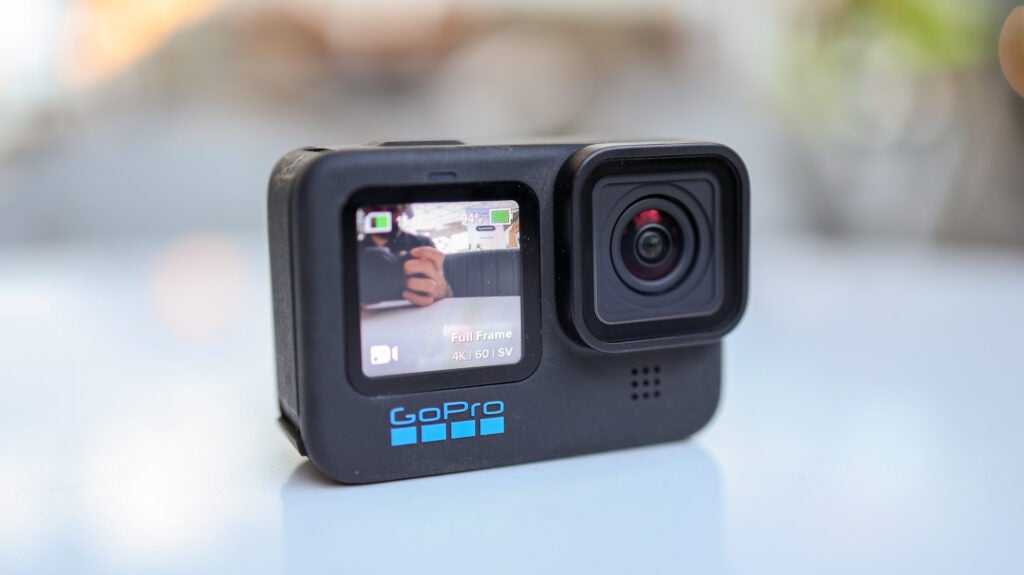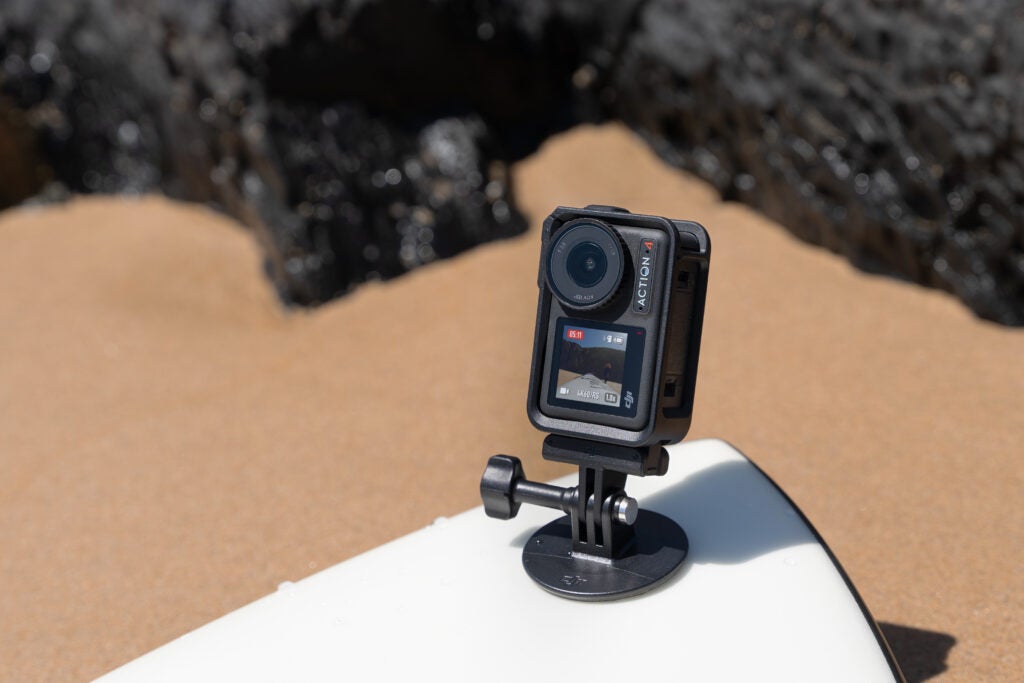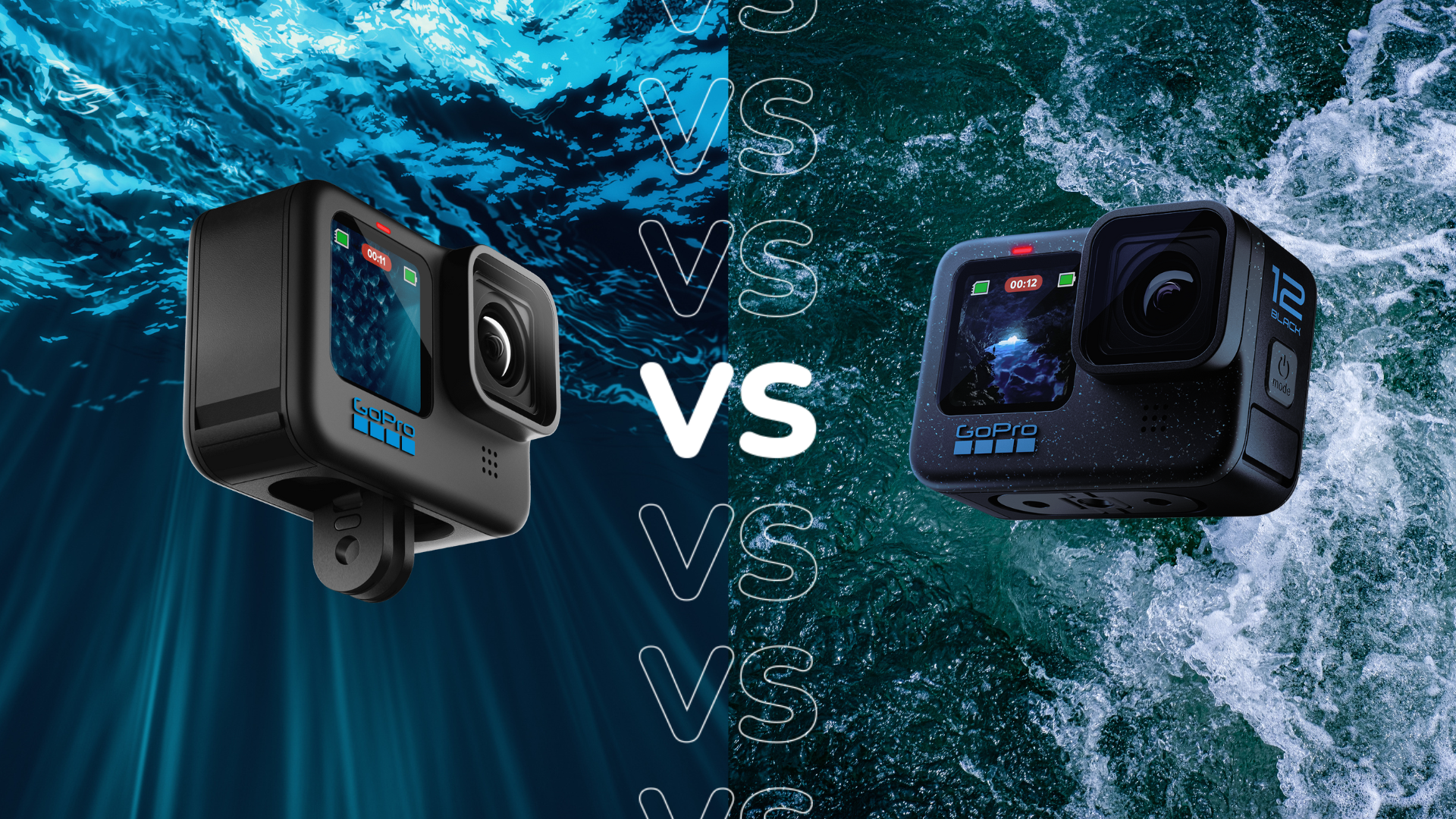GoPro Hero 11 Black vs DJI Osmo Action 4: Which action cam is better?

DJI recently announced its latest dual-screen action camera, the DJI Osmo Action 4. Keep reading to discover how the action cam compares with the industry-leading GoPro Hero 11 Black.
DJI’s Osmo Action series was once considered a cheaper alternative to GoPro’s Hero range that rivalled the GoPro when it came to performance and features. However, this has changed in recent years with the two cameras currently carrying a very similar price tag.
We’ve highlighted all the biggest differences between these two action cameras so you can see how they compare.
The DJI Osmo Action 4 has a second touchscreen
When it comes to design, the GoPro Hero 11 Black and the DJI Osmo Action 4 have become remarkably similar-looking over the years, with the unique vertical design of the Action 2 long since retired.
The two action cameras share comparable designs and dimensions and, with less than 10 grams between them, the two cameras are similarly lightweight.
One of the biggest upgrades to come to the GoPro Hero line in recent years was the second colour display which arrived alongside 2020’s GoPro Hero 9 Black.
However, unlike the front display on the Osmo Action 4, the one on the Hero 11 Black does not support touch. This makes the screen a bit less convenient than the Osmo for capturing selfies and shooting vlogs.

The GoPro Hero 11 Black can record 5.3K video
When it comes to sheer resolution, the Hero 11 Black has the Osmo Action 4 beat with its support for 5.3K video capture.
The Hero 11 Black can record at 5.3K/30fps in multiple different aspect ratios, reaching 60fps with an aspect ratio of 16:9. The camera can also record 4K at up to 120fps and 2.7K at up to 240fps.
The Osmo Action 4, meanwhile, is capable of capturing 4K video at up to 120fps and 1080p at up to 240fps.
The DJI Osmo Action 4 has a bigger sensor
Despite the above, the Osmo Action 4 actually carries the larger image sensor of the two action cameras.
The Osmo Action has a 1/1.3-inch CMOS sensor which is bigger than the 1/1.9-inch CMOS sensor in the Hero 11 Black.
There are a number of benefits that come with a camera carrying a larger sensor, one of which is low-light performance. We haven’t shared our verdict on the Osmo Action 4 just yet but, going by these specs, we’d expect the action camera to outperform the Hero 11 Black when shooting during the evening or in dimmer environments.

The GoPro Hero 11 Black captures 27-megapixel stills
The Hero 11 Black doesn’t just beat the Osmo Action 4 when it comes to video resolution – the camera also snaps higher-quality stills.
The Hero 11 Black is capable of capturing 27.13-megapixel images and RAW photos with a resolution of 5568 x 4872. The camera can also grab up to 24.69-megapixel stills from 5.3K video.
The Osmo Action 4 is limited to snapping 10-megapixel images in the camera’s still photography mode.
The DJI Osmo Action 4 has better waterproofing
While resolution and performance are important, waterproofing is also a key feature to consider when shopping for a new action camera. This is, of course, especially crucial if you plan to take the camera deep-water diving.
In this case, the Osmo Action 4 comes out on top as the camera is able to withstand being submerged in up to 18m of water without DJI’s waterproof case and up to 60m with the waterproof case.
The Hero 11 Black is more limited in this respect with an ability to withstand up to 10m of water without a waterproof case. However, combine the Hero 11 Black with GoPro’s Protective Housing and you’ll get the same 60m of waterproofing offered by the DJI case.








